Canon Digital IXUS 800 IS Review
Review Date: August 15th 2006
Author: Gavin Stoker
Leave a comment about this Review
|
Image Quality
All of the sample images in this Review were taken using the 6M SuperFine mode, which gives an average image size of around 2-3Mb.
Noise
There are 4 ISO settings available on the Canon Digital IXUS 800 IS which you can select at any time if the camera is in the normal shooting mode. Here are some 100% crops which show the noise levels for each ISO setting:
ISO 100 (100% crop) |
ISO 200 (100% crop) |
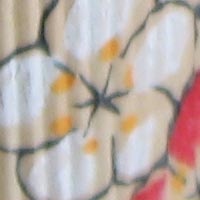 |
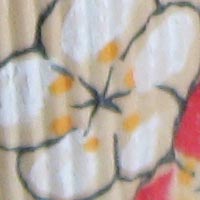 |
ISO 400 (100% crop) |
ISO 800 (100% crop) |
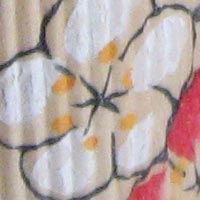 |
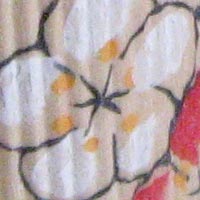 |
There is virtually no discernible noise at the slowest settings of ISO 100 and 200. Although noise starts to noticeably intrude upwards of ISO 400, results via this maximum setting are still perfectly usable. ISO 800 exhibits obvious noise, but is still fine for small prints.
Sharpening
Here are two 100% crops which have been Saved as Web - Quality 50 in Photoshop. The right-hand image has had some sharpening applied in Photoshop. The out-of-the camera images are a little soft at the default setting and benefit from some further sharpening in a program like Adobe Photoshop. Alternatively you can decrease the in-camera sharpening by choosing the Low Sharpening image effects option.
Original
100% Crop |
Sharpened 100% Crop |
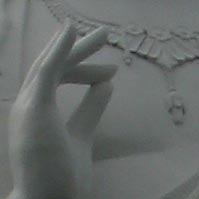 |
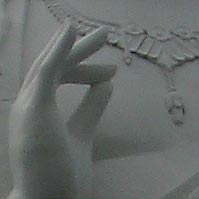 |
 |
 |
Chromatic Aberrations
The Canon Digital IXUS 800 IS handled chromatic aberrations extremely well, with only very limited purple fringing in areas of high contrast, as shown in the examples below.
| Example
1 |
Example
2 |
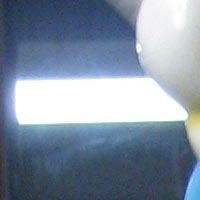 |
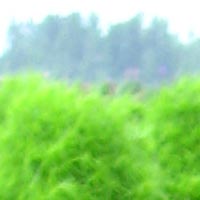 |
Macro
The Canon Digital IXUS 800 IS offers a Macro setting that allows you to focus on a subject that is 5cms away from the camera. The first image shows how close you can get to the subject in Macro mode (in this case a compact flash card). The second image is a 100% crop.
| Macro Shot |
100% Crop |
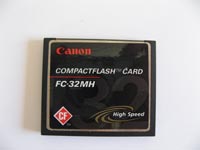 |
 |
Flash
The flash settings on the Canon Digital IXUS 800 IS are Auto, On, Auto Red-eye Reduction, Slow Synchro and Off. These shots of a white coloured wall were taken at a distance of 1.5m.
| Flash Off - Wide Angle (35mm) |
Auto Flash - Wide Angle (35mm) |
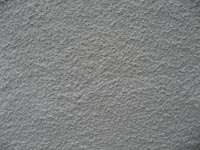 |
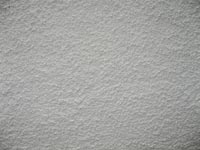 |
| Flash Off - Telephoto (140mm) |
Auto Flash - Telephoto (140mm) |
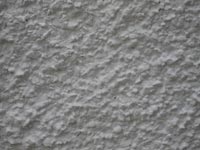 |
 |
And here are some self-portraits.
| Flash Off |
Flash Off (100% Crop) |
 |
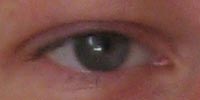 |
| Flash On |
Flash On (100% Crop) |
 |
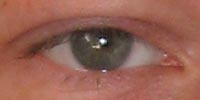 |
Night Shot
The Canon Digital IXUS 800 IS maximum shutter speed is 15 seconds, which is good news if you're seriously interested in night photography. The shot below was taken using a shutter speed of 1/60 second, aperture of f/2.8 at ISO 100. I've included a 100% crop of the image to show what the quality is like.
| Night Shot |
100% Crop |
 |
 |
Overall Image Quality
With most shooting conditions returning impressive results, the nine point AiAF is pretty spot on, picking up on subjects that are not always dead centre of frame, while macro down to 2cm is great for photographing summer blooms. In Japan recently, I also used the Night Snapshot and Foliage settings from among the shooting modes a lot, because, quite simply, they worked, picking up background detail and adding some pep to the foreground respectively. Though red eye is occasionally a problem with low light people shots, this is not uncommon in a compact of its ilk, as is the occasional fringing. A top sensitivity setting of ISO 800 is respectable, and, although noise starts to noticeably intrude upwards of ISO 400, results via this maximum setting are still perfectly usable. A good performance from a digicam for which style matters nearly as much as the end result; indeed overall I found the results from the IXUS 800 IS more consistent than those from the Fuji F30 I was using for the same period, under the same conditions. As mentioned in the body of the review, image stabilization is more reliable than not, and it�s certainly a handy feature to have for those who�ll be taking snapshots under a wide variety of lighting conditions, with or (preferably) without flash.
|
![]() PhotographyBLOG
is a member of the DIWA
organisation. Our test results for the Canon Digital IXUS
800 IS have been submitted to DIWA
for comparison with test results for different samples of
the same camera model supplied by other DIWA
member sites.
PhotographyBLOG
is a member of the DIWA
organisation. Our test results for the Canon Digital IXUS
800 IS have been submitted to DIWA
for comparison with test results for different samples of
the same camera model supplied by other DIWA
member sites.
